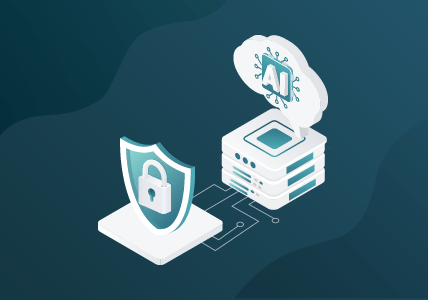What Is Network Optimization (and Why Is It Important)?
At its most basic, a network is a system made up of two or more computers sharing resources, data, and communications, with the goal of more quickly and effectively accomplishing essential tasks. A network is more than just the sum of its parts; it’s an essential kind of infrastructure that facilitates everything from interoffice hardware solutions (such as being able to share and access a wireless printer) to the very existence of the internet (which is itself a massive network comprising hundreds of millions of smaller networks, all sharing information and resources).
Simply put, networks are a vital part of how we conduct business in the modern world. As such, optimizing network performance should be a major goal for any modern business.
- What Is Network Optimization?
- What Metrics Impact Network Performance?
- What Are the Benefits of Network Optimization?
- How to Optimize Network Performance
- Gigamon for Effective Network Observability
- Wrapping Up
What Is Network Optimization?
Network optimization is an umbrella term that refers to a range of tools, strategies, and best practices for monitoring, managing, and improving network performance.
In today’s highly competitive, dynamic business environment, it’s not enough for essential networks to perform adequately. As we move further into the digital age, the world depends more and more on reliable, fast, safe, available, 24/7 data transfer. Unfortunately, outdated or under-dimensioned hardware or suboptimal software can limit available bandwidth and introduce increased latency. Obsolete or underutilized network security options can negatively impact performance and leave systems unprotected. Sudden surges or spikes in traffic can overwhelm essential network functions and slow down response times. And the list goes on, creating potentially hundreds of mounting issues capable of deteriorating the end-user experience.
The primary goal of network optimization is to ensure the best possible network design and performance at the lowest cost structure. The network must promote increased productivity and usability and allow data to be exchanged effectively and efficiently. And this is achieved by managing network latency, traffic volume, network bandwidth, and traffic direction.
What Metrics Impact Network Performance?
When it comes to your network, optimizing can only happen once the current state has been fully assessed. However, if you want to get a clear picture of networking performance within your organization, you will find that there are a significant number of parameters and components that are involved. In the interest of helping you get started, targeting the most relevant areas, here are five essential factors to consider when measuring your network operations:
Latency
Latency describes the time it takes for data to travel between two locations (such as between two computers on a network), with lower latency indicating a faster, more responsive network. This delay in data transmission may only amount to a few milliseconds at each individual point in the journey, but when combined can add up to a noticeable amount of network lag.
Although the absolute upper limit of data transmission speed is the speed of light, certain limiting factors, such as the inherent qualities of WAN routers or fiber optic cables, will always introduce some amount of latency. Other causes may include increased data payloads, retransmission of duplicate packets, the extensive array of inline security tools, proxies, switches, firewalls, and other network elements analyzing and adding to network traffic, and retrieving stored data.
Availability
Availability is a measure of how often relevant network hardware and software function properly. The flip side of availability is downtime, where the systems in question are not performing to the desired specifications. Optimal availability means that no hardware or software downtime is negatively impacting network performance.
Network availability can be easily calculated by dividing the uptime by the total time in any period, with the most obvious goal being 100 percent availability and 0 percent downtime. That said, it is not uncommon for complex systems (such as networks) to occasionally experience problems, so 100 percent availability is not something any business is likely to achieve. On the other hand, striving for this lofty standard is an essential aspect of network optimization. Achieving “five nines” (99.999 percent) or better for availability is paramount.
Packet Loss
A network packet is a small segment of data that may be transmitted from one point to another within a network. Complete messages, files, or other types of information are broken down into packets which are then individually sent and recombined to reconstruct the original file at the destination. In the event that a packet fails to arrive intact, the origin will need to resend only the lost packet, instead of resending the entire file.
Although the occasional lost packet is seldom cause for concern, a large number of lost packets can disrupt important business functions and may be an indication of larger network-related problems. Packet loss is quantifiable by monitoring traffic at both ends of the data transmission, then comparing the number of sent packets to the number of packets received.
Network Jitter
Jitter is used to describe the amount of inconsistency in latency across the network, while latency measures the time it takes for data to reach its destination and ultimately make a round trip. When delays between data packets are inconsistent, it can affect a network’s ability to deliver real-time, and especially two-way, communication. This can create issues with video conferences, IP security cameras, VoIP phone systems, and more. Network jitter is symptomatic of network congestion, lack of packet delivery prioritization, outdated hardware, and overburdened network equipment. Other causes may include a poor internet connection or using lower-quality wireless networks.
Because network jitter may result in lost packets, dropped connections, network congestion, and poor user experience — especially audio, voice, and video feeds — it is an important consideration for network optimization.
Utilization
Generally speaking, whenever a component of the network is more than 70 percent utilized, slowdowns will occur due to buffering of packets, switch port head-of-line blocking issues, and their backplanes being overwhelmed. If the component is highly utilized for long periods of time, the slowdowns turn into serious delays. The connection to the internet can become a bottleneck when the number of simultaneous interactions involving internet provider-based applications and services exceeds what service allows for. Measuring utilization provides a big-picture view of your network to determine which sections are seeing what amounts of traffic and what times peak traffic is most likely to occur. Correctly measured, utilization can give you insight into which networks are carrying the largest load, where the loads are coming from, and whether utilization is too high in certain areas.
In terms of measurement, traffic usage may be represented as a ratio between current network traffic and the peak amounts networks are designed to carry, represented as a percentage.
What Are the Benefits of Network Optimization?
Managed effectively, network optimization is capable of helping organizations build more effective and efficient internal and external networks. This carries with it a number of distinct advantages, including the following:
Increased Network Throughput
Network optimization removes the hurdles that stand in the way of optimal data transmission speeds. This means decreased latency and jitter, faster response times, and a better-connected IT ecosystem, and, as a result, increased throughput.
Enhanced Employee Productivity
Latency, packet loss, and downtime in internal networks prevent employees from being able to access and use vital tools and information when and how they need them most. Network optimization keeps data flowing properly, so your workforce doesn’t have to sit on their hands waiting for your network to catch up.
Improved Analytics and Security Posture
An important element of network analytics and security is traffic visibility. By keeping a close eye on what traffic is moving through your network, where it’s going, and what it’s doing, you’ll gain the benefit of being able to more quickly identify and respond to threats, and track various crucial metrics, including those outlined above.
Armed with this information, organizations using network performance monitoring and diagnostic (NPMD), application performance monitoring (APM), and security tools can analyze captured data and turn it into valuable, actionable insights.
These tools can be further enhanced with advanced metadata, including attributes from the application layer, to solve more advanced use cases. Network analytics can likewise be employed in predictive modeling, providing accurate forecasts of future network usage.
Enriched Customer Experience
Customer-facing networks also benefit from network optimizers, with faster, more available services. When customers enjoy full functionality without having to wait longer than expected, they are more likely to want to continue doing business with your company.
Greater Overall Network Performance
Obviously, the overall goal of network optimization is to optimize your network’s operation. This means better performance across the board and improved returns from any and all services and systems that rely on network performance.
How to Optimize Network Performance
Network optimizers help you improve network performance and reliability, leading to enhanced security and saving you money. Learn more about how network optimization solutions can help build a Zero Trust architecture and improve performance overall.
Network Monitoring
Network monitoring is a technique that allows you to monitor traffic on your network to identify inefficiencies and potential threats. Instead of identifying and troubleshooting network issues after they impact your business, network monitoring tools, like GigaVUE® Cloud Suite, allow you to track network performance and identify security threats in real time. As a result, you can eliminate blind spots that create a security risk within your network.
Load Balancing
When a network receives a simple request from a single user, it’s easy to complete that request without impacting network performance. When a network receives hundreds or thousands of requests, things can start to slow down.
Load balancing is a technique that allows traffic to be distributed in a way that optimizes network performance. A load balancer takes requests from the user and routes them to the server that’s best able to handle those requests. This means that individual servers aren’t overloaded with requests, leading to better network performance.
Bandwidth Optimization
Finding the right amount of bandwidth for your network can be a tough task, and you don’t want to overpay for bandwidth you’re not using. Bandwidth optimization is a strategy that allows you to get a better understanding of how much bandwidth you need and how you can optimize your network to ensure each device and application has the appropriate bandwidth.
You can use a bandwidth optimizer to limit certain applications or devices based on bandwidth usage, allocating more bandwidth to the types of traffic you’re prioritizing. You can also use bandwidth analysis and monitoring tools to determine how much bandwidth various applications and devices use.
Network Settings Optimization
There are several network optimization tools and strategies, but optimizing your network settings is one of the simplest ways to improve performance. There are so many network settings that can impact network performance, including packet and buffer sizes, quality of service (QoS) settings, and more. You can use QoS settings to prioritize the most important network traffic over less important forms of traffic.
Verifying Network Connections
You might think of your network as a virtual entity, but it starts with hardware. If the hardware you use isn’t connected and configured properly, it can lead to network performance problems. Check all the hardware you’re using to make sure it’s connected properly, including routers, switches, cables, and any other network devices you use.
If you’re not familiar with connecting and configuring this hardware, have somebody inspect your network devices to make sure everything is set up properly.
Use Content Delivery Networks (CDNs)
When someone watches a video or views an image on your network, they’re usually making a request to the same server regardless of their location. Content delivery networks (CDNs) are geographically distributed networks that contain data like images and videos. These data centers are located all over the world, allowing users to connect to the server that’s geographically closest to them. As a result, CDNs allow content to load faster, which leads to a better user experience.
Use Software Defined Networking (SDN)
Networks are traditionally controlled by the hardware devices that connect to the network. With software-defined networking (SDN), you can use software to manage your network and direct traffic. You can use an SDN to control traffic on a virtual or physical network, and increased flexibility means you can choose the equipment that works best for your network.
SDN also results in better network security by giving you a more holistic view of potential threats. Taking advantage of techniques like SDN and TLS/SSL decryption is an essential part of creating a secure network.
Frequent Network Maintenance
At the end of the day, it’s your job to ensure your network is secure and efficient. Frequent network maintenance is a key part of network optimization, and it’s something you have to stay on top of.
So, what does network maintenance involve? For starters, you should make sure you’re updating your hardware and software regularly to address potential performance and security issues. You should also update any security tools and protocols when updates are released to address vulnerabilities.
When you update your hardware and software, check your network settings to make sure everything is in order.
Gigamon for Effective Network Observability
The Gigamon Deep Observability Pipeline, based on the GigaVUE Cloud Suite, amplifies the power of your cloud, security, and observability tools with actionable network-derived intelligence and insights to eliminate security and performance blind spots, enabling you to proactively mitigate security and compliance risk, deliver a superior digital experience, and contain the runaway cost and complexity associated with managing your hybrid and multi-cloud infrastructure.
Wrapping Up
Network optimization is an essential part of improving network performance and security to create a better experience for everyone who uses your network. Optimizing your network isn’t as simple as setting up a few basic tools — it’s a continued effort that involves regular maintenance and changes.
The Gigamon Deep Observability Pipeline gives you deeper insights into your network, helping you eliminate blind spots and create a better user experience. Paired with network optimization software, Gigamon tools empower you to create a better network. Try a free demo to learn how our network solutions can help you enhance network performance and security.
Why Gigamon?
Gigamon goes beyond current security and observability approaches that rely exclusively on metrics, events, logs, and traces (MELT) data. We extend the value of your cloud, security, and observability tools with real-time network intelligence and insights derived from packets, flows, and application metadata to deliver defense-in-depth and complete performance management across your hybrid and multi-cloud infrastructure. This allows you to shift to a proactive security posture by pinpointing threats and anomalies to mitigate exposure to risk and expedite troubleshooting.
Featured Webinars
Hear from our experts on the latest trends and best practices to optimize your network visibility and analysis.

CONTINUE THE DISCUSSION
People are talking about this in the Gigamon Community’s Networking group.
Share your thoughts today








 Dan Daniels
Dan Daniels